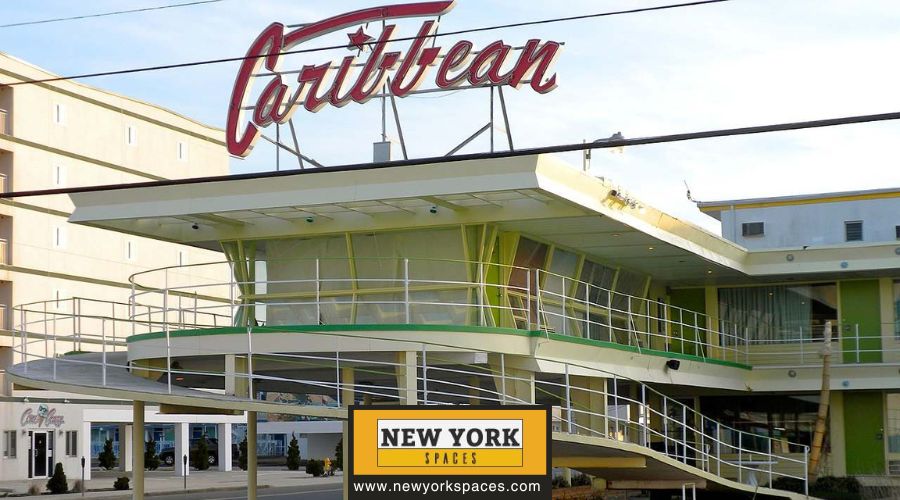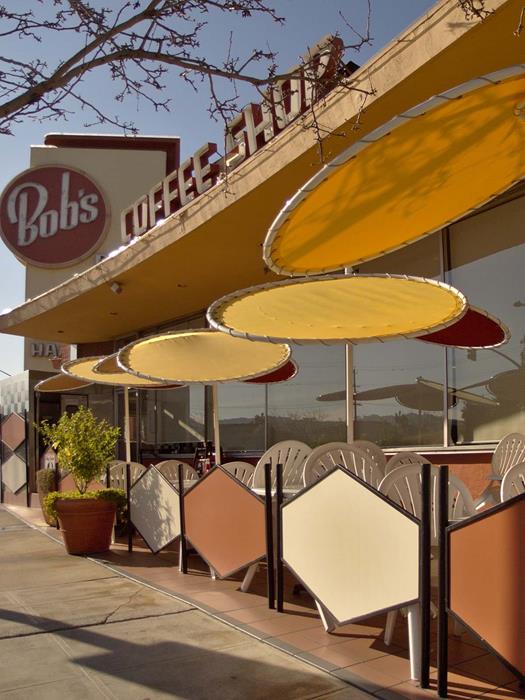The 1950s was a period of unbridled optimism in the United States when the country emerged from the shadows of World War II into the bright, promising light of technological advancement and economic prosperity. This era witnessed an explosion of cultural dynamism, nowhere more evident than in its architecture. Among the architectural styles that flourished, one particularly stands out for its embodiment of the era’s spirit: Googie architecture. This blog post explores this futuristic style, delving into its origins, characteristics, and why it continues to fascinate.
The Dawn of Googie Architecture
To understand Googie architecture, it is essential to place it within the historical and cultural context of 1950s America. The country was in the grip of post-war euphoria, with technological innovations and space exploration igniting the public imagination. Architecture, always a mirror of its times, responded with Googie – a style that expressed the era’s fascination with the future, space, and atomic energy.
Why is it Called Googie Architecture?
The term “Googie” itself is a story of serendipity and cultural commentary. It originates from a coffee shop designed by architect John Lautner in 1949, named “Googie’s,” located at Sunset Boulevard in Los Angeles. The shop featured elements defining the style: upswept roofs, glass walls, and neon lights. It was futuristic and unconventional, catching the eye of anyone who passed by.
Architectural critic Douglas Haskell was among the passersby; he saw the design, recognized its significance, and coined “Googie” in a 1952 article for “House and Home” magazine. Haskell used “Googie” to describe the new architectural phenomena that embraced the future with open arms.
How Googie Influenced the Futuristic Architecture of the 1950s:
Space Age Inspiration: The 1950s were marked by significant technological advancements and space exploration. This era’s architecture, including Googie, mirrored the excitement and optimism of the Space Age. Designs often featured elements reminiscent of rockets, flying saucers, and other space-related imagery.
Use of Modern Materials: The futuristic architecture of the 1950s made extensive use of new materials and construction techniques, including steel, glass, and neon. Googie architecture adopted these materials to create visually striking structures that conveyed a sense of the modern and the futuristic.
Emphasis on Futuristic Motifs: The broader futuristic architecture of the 1950s and Googie architecture emphasized motifs that suggested speed, movement, and forward-looking. This can be seen in sweeping curves, boomerang shapes, and cantilevered structures that seemed to defy gravity.
Integration with Popular Culture: The 1950s was when popular culture began to seriously influence architectural design. Googie architecture, with its roots in the futuristic architecture of the era, was no exception. It was designed to be eye-catching and memorable, often seen in roadside diners, motels, and bowling alleys, making architecture a part of everyday American life.
Optimism and Consumerism: The post-WWII economic boom led to increased optimism and consumerism, which were reflected in the architecture of the time. Googie architecture, in particular, was designed to attract attention and symbolize progress and futurism, catering to the era’s consumer culture.
Car Culture Influence: The 1950s saw a significant rise in car ownership and the development of the interstate highway system in the United States. Googie architecture was often designed with this car culture in mind, featuring large, bold signs easily seen from the road and incorporating elements like drive-thrus that catered to motorists.
Characteristics of Googie Architecture
Googie architecture is not subtle. It is a style that demands attention, characterized by its bold use of modern materials, embracing of new construction techniques, and departure from traditional architectural forms. Here are some of its key features:
- Dynamic Shapes and Forms: Googie buildings often feature dramatic, geometric shapes. Think of boomerangs, flying saucers, atoms, and parabolas. These shapes were not just for show; they symbolized movement and energy, reflecting the era’s optimism.
- Innovative Use of Materials: Googie architects experimented with then-new materials like steel, glass, and neon. These materials allowed for structures that seemed to defy gravity, with cantilevered roofs and expansive windows that blurred the lines between indoors and out.
- Integration with the Landscape: Many Googie structures were designed with their surroundings in mind, using the landscape to enhance their futuristic appeal. This approach was part of a broader trend in mid-century architecture to harmonize with the natural environment.
- Emphasis on the Car Culture: The 1950s saw the rise of car ownership in the United States. Googie architecture catered to this trend, featuring large parking lots, drive-thrus, and designs meant to be appreciated by moving vehicles.
The Impact and Legacy of Googie Architecture
Despite initial skepticism and criticism from some corners of the architectural world, Googie architecture has left an indelible mark on the physical and cultural landscapes. Its influence, far more extensive than often acknowledged, spanned various domains, from the design of roadside establishments to its permeation into the fabric of popular culture. This section explores the multifaceted legacy of Googie architecture, underscoring its enduring significance and the renewed interest it has sparked in contemporary times.
Preservation and Revival
Growing Appreciation and Preservation Efforts: In recent years, a resurgence of interest in Googie architecture has led to significant preservation efforts. Advocates for historical preservation have rallied to protect and restore iconic Googie structures, recognizing their cultural and architectural value.
Renewed Interest Among Architects and Designers: The revival of interest in Googie has not been limited to preservationists. Drawing on its bold experimentation and symbolic richness, architects and designers have sought inspiration from Googie for new projects, blending its distinctive elements with contemporary design practices.
Recognition as Cultural and Historical Artifacts: The movement to preserve Googie architecture highlights its status as an architectural achievement and a cultural and historical artifact. These efforts underscore the importance of Googie architecture in the American architectural narrative, celebrating its contribution to the nation’s cultural heritage and its enduring appeal in the imagination of future generations.
Conclusion
Googie architecture is more than just an architectural style; it is a vivid expression of a moment when the future was bright and anything seemed possible. Its bold shapes, innovative use of materials, and integration with the landscape and car culture make it a unique and fascinating subject of study. As we look back on Googie architecture, we are reminded of the power of architecture to capture the spirit of an age and to inspire future generations.
In exploring the futuristic architecture of the 1950s and the phenomenon of Googie architecture, we uncover not just a style but a story of optimism, innovation, and the unyielding human spirit. Googie reminds us that architecture is not just about buildings; it’s about dreams, aspirations, and the endless possibilities that the future holds.


